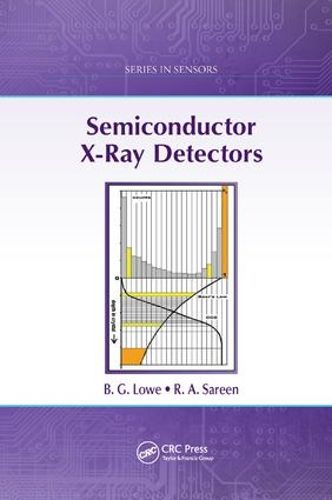Readings Newsletter
Become a Readings Member to make your shopping experience even easier.
Sign in or sign up for free!
You’re not far away from qualifying for FREE standard shipping within Australia
You’ve qualified for FREE standard shipping within Australia
The cart is loading…






Identifying and measuring the elemental x-rays released when materials are examined with particles (electrons, protons, alpha particles, etc.) or photons (x-rays and gamma rays) is still considered to be the primary analytical technique for routine and non-destructive materials analysis. The Lithium Drifted Silicon (Si(Li)) X-Ray Detector, with its good resolution and peak to background, pioneered this type of analysis on electron microscopes, x-ray fluorescence instruments, and radioactive source- and accelerator-based excitation systems. Although rapid progress in Silicon Drift Detectors (SDDs), Charge Coupled Devices (CCDs), and Compound Semiconductor Detectors, including renewed interest in alternative materials such as CdZnTe and diamond, has made the Si(Li) X-Ray Detector nearly obsolete, the device serves as a useful benchmark and still is used in special instances where its large, sensitive depth is essential.
Semiconductor X-Ray Detectors focuses on the history and development of Si(Li) X-Ray Detectors, an important supplement to the knowledge now required to achieve full understanding of the workings of SDDs, CCDs, and Compound Semiconductor Detectors. The book provides an up-to-date review of the principles, practical applications, and state of the art of semiconductor x-ray detectors. It describes many of the facets of x-ray detection and measurement using semiconductors, from manufacture to implementation. The initial chapters present a self-contained summary of relevant background physics, materials science, and engineering aspects. Later chapters compare and contrast the assembly and physical properties of systems and materials currently employed, enabling readers to fully understand the materials and scope for applications.
$9.00 standard shipping within Australia
FREE standard shipping within Australia for orders over $100.00
Express & International shipping calculated at checkout
Identifying and measuring the elemental x-rays released when materials are examined with particles (electrons, protons, alpha particles, etc.) or photons (x-rays and gamma rays) is still considered to be the primary analytical technique for routine and non-destructive materials analysis. The Lithium Drifted Silicon (Si(Li)) X-Ray Detector, with its good resolution and peak to background, pioneered this type of analysis on electron microscopes, x-ray fluorescence instruments, and radioactive source- and accelerator-based excitation systems. Although rapid progress in Silicon Drift Detectors (SDDs), Charge Coupled Devices (CCDs), and Compound Semiconductor Detectors, including renewed interest in alternative materials such as CdZnTe and diamond, has made the Si(Li) X-Ray Detector nearly obsolete, the device serves as a useful benchmark and still is used in special instances where its large, sensitive depth is essential.
Semiconductor X-Ray Detectors focuses on the history and development of Si(Li) X-Ray Detectors, an important supplement to the knowledge now required to achieve full understanding of the workings of SDDs, CCDs, and Compound Semiconductor Detectors. The book provides an up-to-date review of the principles, practical applications, and state of the art of semiconductor x-ray detectors. It describes many of the facets of x-ray detection and measurement using semiconductors, from manufacture to implementation. The initial chapters present a self-contained summary of relevant background physics, materials science, and engineering aspects. Later chapters compare and contrast the assembly and physical properties of systems and materials currently employed, enabling readers to fully understand the materials and scope for applications.